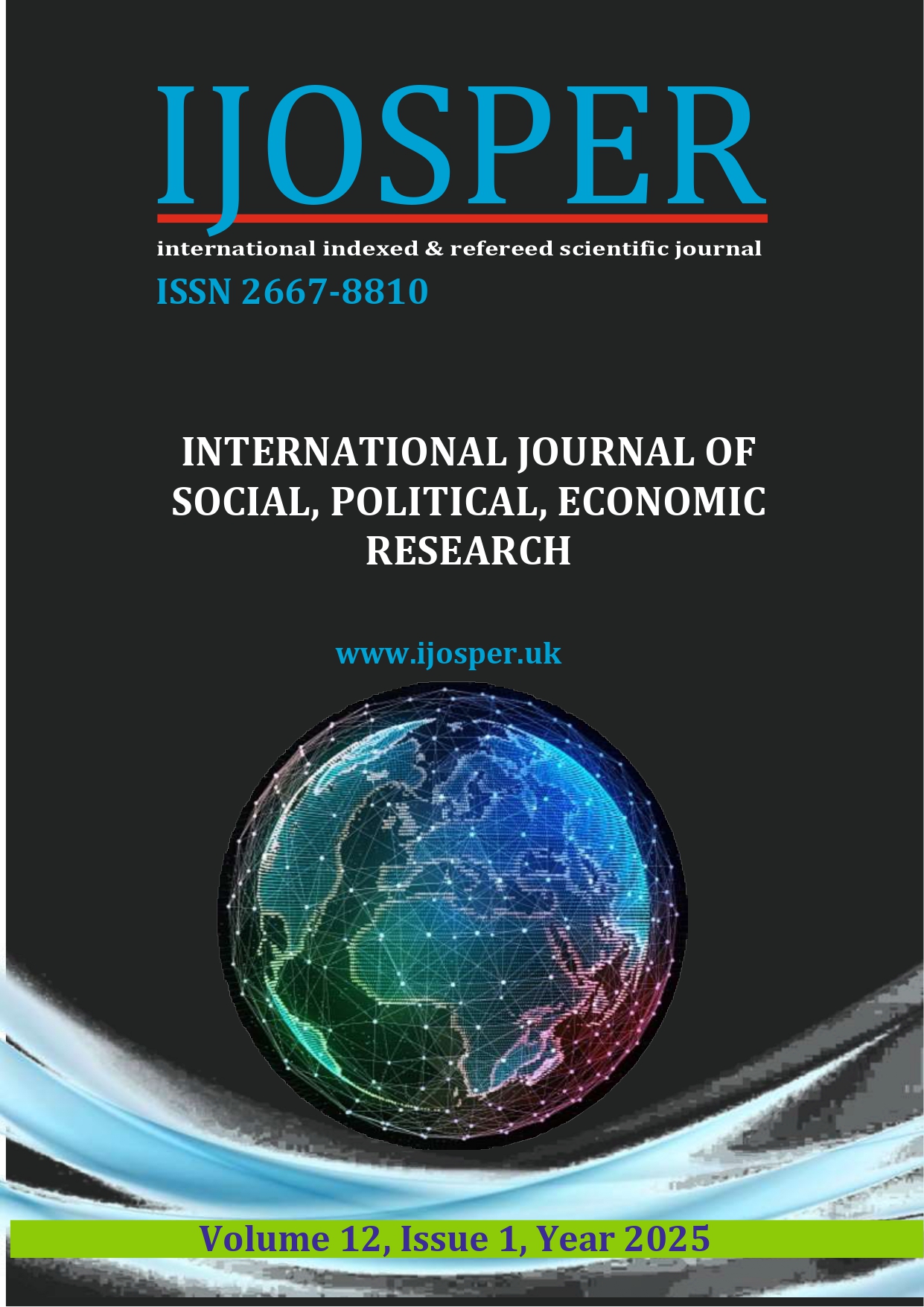Extreme-Right Politics in Europe and South Asia: A Demand-Side Cross-Regional Study
DOI:
https://doi.org/10.5281/zenodo.15506553Keywords:
Extreme-Right Parties, Europe, South Asia, Demand-Centered ThesisAbstract
The rise of extreme-right parties in Europe and South Asia has been shaped by political dissatisfaction, social breakdown, cultural backlash, and economic uncertainty. While extensively studied in the West, similar trends in South Asia remain underexplored. This study applies five demand-side theories to examine these movements: Protest Thesis, Social Breakdown Thesis, Reverse Post-Material Thesis, and Economic Interest Thesis. Using qualitative analysis of secondary sources, this research employs a comparative approach to analyze how these factors influence extreme-right parties across regions. Findings reveal that extreme-right parties thrive on voter dissatisfaction (Protest Thesis) and exploit the collapse of traditional social structures (Social Breakdown Thesis). Backlash against progressive policies (Reverse Post-Material Thesis) and economic anxieties (Economic Interest Thesis) further fuel support. In Europe, parties like France’s National Rally and Austria’s FPÖ capitalize on these factors, while in South Asia, India’s BJP and Bangladesh’s Jamaat-e-Islami follow similar patterns. Extreme-right parties gain traction through political discontent, identity concerns, and economic insecurities. Understanding these factors is crucial for policymakers to develop strategies addressing voter grievances and reducing polarization.
References
Ahmad, A. (2016). India: Liberal democracy and the extreme right. Socialist Register, 52.
Al-Busaidi, Z. Q. (2008). Qualitative research and its uses in health care. Sultan Qaboos University Medical Journal, 8(1), 11.
Betz, H.-G. (2002). Conditions Favouring the Success and Failure of Radical Right-Wing Populist Parties in Contemporary Democracies. In Y. Mény & Y. Surel (Eds.), Democracies and the Populist Challenge (pp. 197–213). Palgrave Macmillan UK. https://doi.org/10.1057/9781403920072_11
Billiet, J., & De Witte, H. (1995). Attitudinal dispositions to vote for a ‘new’ extreme right‐wing party: The case of ‘Vlaams Blok’. European Journal of Political Research, 27(2), 181–202. https://doi.org/10.1111/j.1475-6765.1995.tb00635.x
Chatterji, A. P., Hansen, T. B., & Jaffrelot, C. (2019). Majoritarian state: How Hindu nationalism is changing India. Oxford University Press.
DeVotta, N. (2007). Sinhalese Buddhist Nationalist Ideology: Implications for Politics and Conflict Resolution in Sri Lanka. East-West Center Washington.
Eatwell, R. (2016). Ten theories of the extreme right. In The populist radical right (pp. 422–441). Routledge.
Eller, L. L. (2017). Explaining the Rise of Far-Right Political Parties in Europe.
Heitmeyer, W. (1993). Die Bielefelder Rechtsextremismus-Studie. Juventa-Verl.
Heywood, A. (1999). Political ideologies: An introduction (3rd ed.). Palgrave Macmillan.
Ignazi, P. (1992). The silent counter‐revolution: Hypotheses on the emergence of extreme right‐wing parties in Europe. European Journal of Political Research, 22(1), 3–34. https://doi.org/10.1111/j.1475-6765.1992.tb00303.x
Islam, S. S., & Islam, M. S. (2023). The Jamaat Question in Bangladesh: Islam, Politics and Society in a Post-Democratic Nation (1st ed.). Routledge. https://doi.org/10.4324/9781003310679
Jefferson. (2010). The Spectrum of Political Attitudes. Pearson.ca.
Jones, S. G. (2022). Rise of far-right extremism in the United States. JSTOR.
Kitschelt, H. (1999). Continuity and change in contemporary capitalism. Cambridge University Press.
Knigge, P. (1998). The ecological correlates of right-wing extremism in Western Europe. European Journal of Political Research, 34(2), 249–279. https://doi.org/10.1023/A:1006953714624
Kronstadt, K. A. (2018). India: Religious freedom issues. Congressional Research Service.
Leidig, E. (2020). The far-right is going global. Foreign Policy, 21.
Lipset, S. M. (1969). Political man (Vol. 960). Heinemann London.
Malji, A. (2023). Radical Monks and Rajapaksa: An Overview of Right-Wing Politics in Sri Lanka. Interdisciplinary Reflections on South Asian Transitions: Exploring the Rise of Far Right Ideology, 21–33.
Marshall, P. (2004). Hinduism and terror. First Things: A Monthly Journal of Religion and Public Life, 144, 10–14.
Merkl, P. H., & Weinberg, L. (2003). Right-wing extremism in the twenty-first century. Psychology Press.
Minkenberg, M. (2000). The Renewal of the Radical Right: Between Modernity and Anti‐modernity. Government and Opposition, 35(2), 170–188. https://doi.org/10.1111/1477-7053.00022
Nassaji, H. (2015). Qualitative and descriptive research: Data type versus data analysis. Language Teaching Research, 19(2), 129–132. https://doi.org/10.1177/1362168815572747
Nayak, B. S., & Chakraborty, D. (2023). Interdisciplinary reflections on South Asian transitions: Exploring the rise of far right ideology. Springer Nature.
Perrineau, P. (1997). Le symptôme Le Pen: Radiographie des électeurs du Front national. Fayard.
Qureshi, A., & Naz, T. (2022). The Phenomenon of Far-Right Extremism in Pakistan: A Myth or Reality? NUST Journal of International Peace & Stability, 30–45. https://doi.org/10.37540/njips.v5i1.120
Varshney, A. (2014). Battles half won: India’s improbable democracy. Penguin UK.
Venkatesh, A. (2019). Right-wing politics in India. Origins, 13(1).
Downloads
Published
How to Cite
Issue
Section
License
Copyright (c) 2025 International Journal of Social, Political and Economic Research

This work is licensed under a Creative Commons Attribution-NonCommercial-NoDerivatives 4.0 International License.






